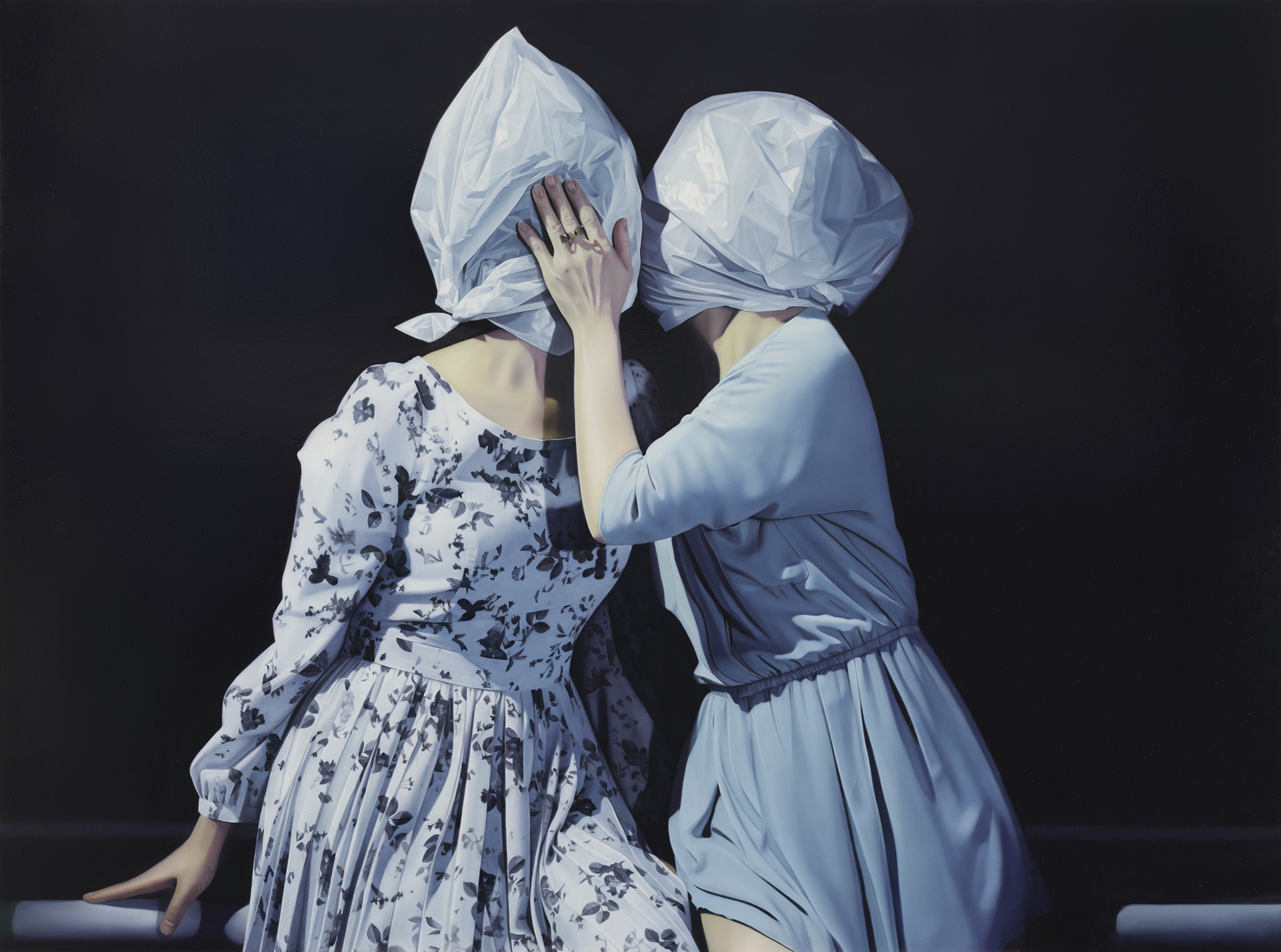Sai Hashizume's latest exhibition of precision realist painting, "This Isn't Happiness," is about updating some of the masters of Western art history. In her five new works, she deals prominently with the surrealist Rene Magritte and Vincent Van Gogh. She also adopts the ominous chiaroscuro of 17th-century Baroque painting, as well as some often darkly symbolic references from 17th-century Dutch still-life painting. Her themes are known, but remain enigmatic. As the title of the exhibition indicates, they are not altogether rosy.
Part of the gist concerns the idea that to many a master, painting does not bringing happiness. One of Hashizume's signature works, "Les Amies" (2016), has two dramatically lit women embracing against a dark background. Their heads are bound in cloth. It is a Magritte composition and theme, based on "The Lovers" (1928). Magritte's mother drowned herself when he was 13 and her body was found with her dress covering her face. In the late 1920s, Magritte painted a number of figures in which the faces were concealed. His portraits were of unidentifiable bodies in intimate, though masked, relationships. Perhaps a childhood psychology also filters through into Hashizume's art.
Uncertain identity, too, ties in with an earlier Hashizume theme. Shoes were part of an artistic collaboration with a Japanese department store, though Hashizume also focused on the feet standing in them. "Candle II" (2016) continues that thread with someone standing in purple heels. With faces and bodies cropped out of the composition, individual identity, apart from the apparent gender, is mostly erased. Viewers can only guess at age, nationality, ethnicity or other personal information. The painted candle Hashizume uses to light the foreground is also a frequent symbol for life's precariousness in Dutch genre painting.



